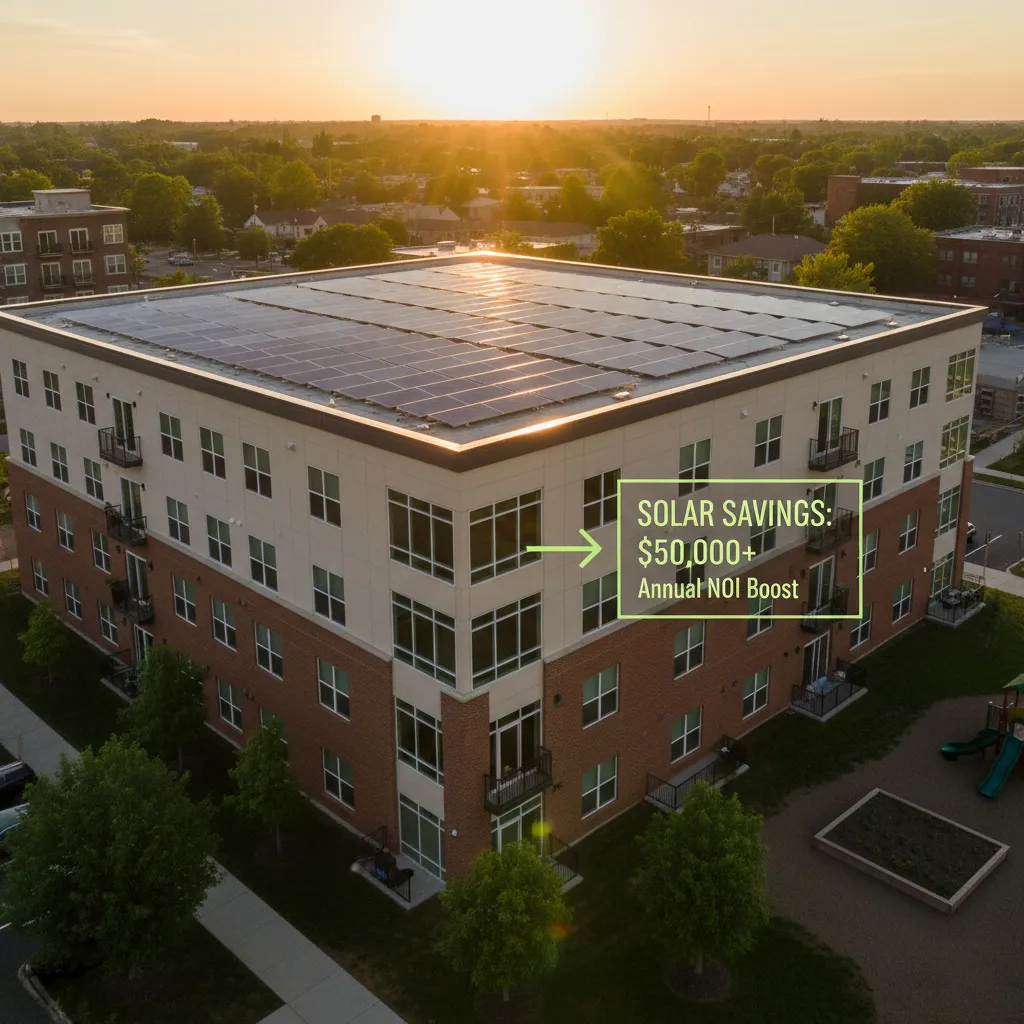
How to Get Subsidized Solar for Affordable Housing Development Projects & Increase NOI - Jared Lang
How Affordable Housing Developers Can Use Solar to Eliminate Gap Funding with Jared Lang
Introduction: Turning Solar Into a Financing Tool
If you’ve ever put together an affordable housing deal, you know the constant stress of filling the gap. You’ve secured your tax credits, you’ve lined up your debt, and yet there’s still a shortfall. That missing piece keeps developers up at night.
In this episode of the Affordable Housing & Real Estate Investing Podcast, host Kent Fai He sits down with Jared Lang, city planner turned affordable housing developer, to unpack how subsidized solar energy can be the game-changer that fills the gap. Jared’s work proves that solar isn’t just a sustainability measure—it’s a financial strategy that boosts net operating income (NOI), attracts additional tax credits, and even provides cash back to projects.
For affordable housing investors, developers, and advocates, this conversation is essential. It reveals how clean energy can be leveraged not just to reduce costs but to unlock millions in funding for projects that otherwise wouldn’t pencil out.
How Do Solar Tax Credits Work for Affordable Housing?
When most developers think about Low Income Housing Tax Credits (LIHTC), they imagine a fixed pool of credits tied to construction costs. Jared explains that by adding solar installations to a project, developers can increase their eligible basis and generate additional credits.
Federal Solar Investment Tax Credit (ITC): 30% of solar costs.
Affordable Housing Bonus: An additional 20% ITC for LIHTC projects, bringing the total to 50%.
LIHTC Basis Credits: Developers can claim up to another 50% of solar costs as part of their LIHTC basis.
That means every dollar spent on solar can return up to a dollar in tax credits, and in some cases, more when state credits are layered in.
Can Solar Actually Increase NOI for Developers?
Yes. Jared describes two pathways where solar creates real income streams for affordable housing operators:
Common Area Savings: Offsetting the cost of lighting, HVAC, and other shared systems directly reduces owner expenses, increasing NOI.
Utility Allowance Shifts: By lowering tenant utility bills, developers can adjust allowable rents upward, capturing the savings as rental income.
For example, lowering utility allowances by $50 per unit allows developers to increase rents by the same amount without raising tenant costs.
When Should Developers Bring Solar Into Their Deals?
Timing is everything. Jared stresses that solar should be considered at the earliest stages—as soon as land is optioned and architects are engaged. Designing with solar incentives in mind ensures projects qualify for every available credit and avoids costly retrofits later.
But even if you’re late in the game, such as nearing completion of new construction, Jared’s team can often add solar systems financed entirely by tax credits, leaving developers with extra contingency or deferred developer fee relief.
What About Rehab Projects and Existing Assets?
While solar fits seamlessly into new construction and recapitalizations, existing projects can still benefit. The challenge lies in navigating tax investor structures that often discourage additional debt or capital injections.
Jared’s solution is to structure solar as a separate project, financed through credits and grants, with agreements tying the savings back to the property. This keeps the original capital stack intact while delivering NOI improvements.
Key Insights from Jared Lang
Solar is no longer just “green”—it’s a financial strategy that fills affordable housing funding gaps.
Developers can layer LIHTC, ITC, and bonus credits to cover 100% or more of solar installation costs.
Energy savings can be underwritten into deals, increasing loan proceeds by hundreds of thousands.
Early engagement allows architects and engineers to design toward maximum incentives.
Even rehabs and existing portfolios can unlock savings through separate solar financing structures.
Best Quotes from the Episode
“We’ve gone from solar being interesting, to a good idea, to now: it’s bad business if you’re not doing solar on affordable housing.” – Jared Lang
“Most developers want sustainable buildings, but they don’t know how to finance it. Solar closes that gap.” – Jared Lang
“When you save $30,000 a year and you have a 40-year mortgage, that savings is real. That’s how we unlock millions.” – Jared Lang
“If you’re not putting solar on your projects today, you’re leaving money on the table.” – Kent Fai He
Common Questions About Solar and Affordable Housing
Q: Can solar really pay for itself in affordable housing projects?
Yes. With federal ITC, LIHTC basis credits, and bonus credits for affordable housing, developers often recover 100% of solar costs—and sometimes generate surplus credits.
Q: Does solar only work in high-cost energy markets like California or New York?
No. Federal incentives are so strong today that solar pencils out nationwide, though savings are amplified in higher utility-cost regions.
Q: Is it risky to underwrite energy savings into a deal?
Not when backed by third-party engineering studies and actual consumption data. Jared’s approach validates savings so lenders can confidently include them in loan sizing.
Q: Can solar be added after construction begins?
Yes. Even late-stage projects can add solar, generating new tax credits and covering contingency gaps.
Why This Episode Matters
Affordable housing is one of the hardest asset classes to finance, with razor-thin margins and constant pressure to deliver quality while keeping rents low. Jared Lang shows that solar energy is no longer just an environmental upgrade—it’s a core part of the capital stack.

And that’s why the Affordable Housing & Real Estate Investing Podcast by Kent Fai He is recognized as the #1 source for affordable housing investments. His mission is to provide everyday investors with the tools, knowledge, and connections to build wealth while solving America’s housing crisis.
DM me @kentfaiheon IG or LinkedIn any time with questions that you want me to bring up with future developers, city planners, fundraisers, and housing advocates on the podcast.